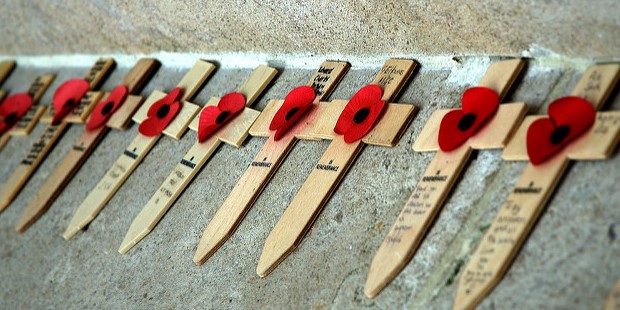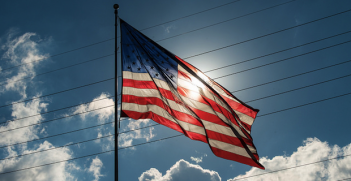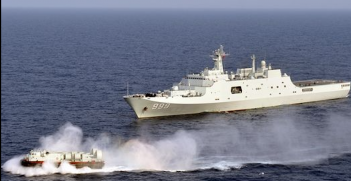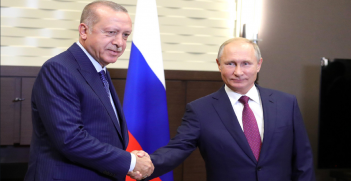Lessons from the Somme

This week marks the 100th anniversary of the Battle of the Somme during World War I. With almost no European intellectual or political movement untouched by the trauma of the war, it is useful to revisit the history of the catastrophic battle fought by the British and French armies against the Germans.
At exactly 7:30 in the morning on 1 July, 100 years ago, thousands of British soldiers went “over the top” towards enemy lines in the lowlands surrounding the French river Somme.
They didn’t run forwards up the slopes towards the German trenches when the whistles broke the morning silence. The generals had calculated that, with each man carrying more than 30 kilograms of pack and ammunition, they would be too tired to fight if they tried to run the several hundred yards across no-man’s land.
So the mostly untested volunteers walked forward in even lines, wave after wave, towards the Maxim machine guns and the tangled barbed wire.
History records the result: few reached the other side. With more than 19,000 dead and nearly 40,000 more wounded, 1 July 1916 remains the single bloodiest day in Great Britain’s long martial history. Next to no ground was won.
It is largely as a result of this single, catastrophic day that “the Somme” remains a by-word for senseless slaughter on an industrial scale, 100 years later.
A bitter lesson
Recent BBC documentaries, some fronted by decorated officers, have tried to emphasise the Somme campaign as a valuable learning experience.
The generals learnt from the mistakes of that first day, we are told. They learnt that shrapnel-casting shells don’t destroy barbed wire. They learnt the wisdom of “creeping barrages”: mechanically timed, advancing artillery fire that gives cover for moving troops. They learnt what the French had learnt at Verdun: when facing machine gun fire, erratic, short bursts of running from cover to cover is (unsurprisingly) more effective than sending young men forwards in even lines, protected only by their prayers.
The men themselves had learnt the hard way that the fortified German trenches, some with strongholds 30 feet underground, couldn’t be destroyed by British artillery fire. The British pounded the German front lines with artillery, day and night, for a full week before the 1 July attack, to little effect.
By the time the onset of winter in late November made further fighting impossible, about six miles had been won for King and Country from the Kaiser’s Huns. In retrospect, accordingly, the campaign can be viewed as the beginning of the end for the Kaiser’s Second Reich, and the war that was to “end all wars”.
The cost was around one million men dead, roughly 500,000 from either side. This includes 23,000 ANZACS who fought with distinction near Poizières and Mouquet Farm–more than died in the entire Gallipoli campaign.
As autumn turned to winter, the churned-up, rain-soaked chalk of the Somme had made conditions for the soldiers so bad as to defy all possible description, in the words of one British correspondent.
More than 70,000 men still lie buried in that white chalk. Their bodies, weighed down with packs and guns, simply sank beneath the sodden earth.
The Great War and its repurcussions
At Deakin, several of us have just finished editing a collection of essays on the legacy of World War I on subsequent European philosophical and social thought. The papers explore how almost no intellectual or political movement was untouched by the trauma of the war.
German-born American political theorist Hannah Arendt reflected in the The Origins of Totalitarianism (1951),
The first explosion [in late July 1914] seems to have touched off a chain reaction in which we have been caught ever since and which nobody seems able to stop.
Frank Furedi’s important 2014 study The First World War: Still No End in Sight documents at copious length the crises of imperialism, rationality, authority, liberalism and democracy that followed the 1914-18 conflict, and which make of so much of 20th century thought such an unremittingly bleak affair.
After what occurred in places like the Somme, ideals like King and country, liberty, equality, nobility, progress, perhaps even God, seemed empty to many. As the old empires collapsed, the much-touted civilised superiority of the white races was profoundly compromised for all but the most conservative, and “imperialism” become a dirty word.
Philosophers as different as Wittgenstein and Heidegger proposed devastating criticisms of the previous Western tradition, which now seemed pregnant only with apocalypse, nonsense or tedium. Such intellectual visions of rebirth would find echoes in the political philosophies of Adolf Hitler and Joseph Stalin.
Even analytic philosophy’s determined hostility to “metaphysical” and wider social questions reflects its predominantly English proponents’ desire to have done with the “Germanic” obscurities that many educated Brits saw as vindicating hated Prussian militarism.
An author better versed in psychoanalytic lore than I am might venture to diagnose the intellectual reconfigurations that followed the Great War as so many civilisational pathologies, trying to encompass the trauma to European civilisation.
There was Oedipal rage nearly everywhere against fallen paternal ideals, especially among the young who had suffered the trenches. Melancholic elegies multiplied, particularly among German thinkers, condemning modern technology and urban civilisation as uncontrolled daemonic forces.
Others among the defeated, like former stormtrooper Ernst Jünger, tried to forge a kind of manic “socialism of war” from the experiences of the frontline solders facing the storm of steel. A few, like the lovable butler Carson on Downton Abbey, tried hopelessly to deny that things had irreversibly changed.
All glib one-liners aside, the questions of what a fully adequate and sane response to such events could have looked like, and how they should be commemorated–even today–are much more difficult to answer.
Psychoanalysis itself was irrevocably transformed by the Great War. It was WWI’s horrors that led Freud to upend much of his previous thinking, now postulating a “death drive” that fatally attracts human beings to destruction, recalcitrant to all rational self-interest.
In the war of men and machines …
It’s not only the massacre of the opening day of the Somme that makes it a potent representation of the Great War as a whole, and the civilisational break this new industrialised war represented.
As in the conflict as a whole, many more men were killed on the Somme by artillery fire, projected invisibly from miles behind the lines, than by even the Maxim machine guns that mowed down entire battalions.
On that opening day, in the minutes before the Allied troops went over the top, mines of unprecedented size, containing thousands of tonnes of high explosives, were detonated by the Allies beneath the German line. One of these mines exploded with such force it could be heard in London, leaving the “Lochnager” crater over seventy thousand square feet in size, displacing over seven and a half million cubic feet of earth.
At about the volume of six ocean liners, this crater is still the largest man-made impact hole on the planet. The Lochnager mine killed a countless number of Germans who never even had the chance to see their enemy.
Air fighting, reconnaissance and aerial bombing were also coming to play an increasing role in modern warfare by mid 1916, above the Somme lines. And it was this campaign that saw the introduction of the mechanised tank destined to replace the cavalry to which British general Douglas Haig remained sentimentally attached. In the face of such destructive technologies, it cannot be remarked enough–although it often isn’t–that the traditional martial virtues of the Western nations were threatened with obsolescence.
Courage was one of the four cardinal virtues for the ancient Greeks and Romans: societies whose near-constant warring assigned this manly virtue a distinctly military mien. (The Greek word andreia, like the Latinvirtu means “manliness”.) Achilles was the founding exemplar: a hero whose martial prowess, as Homer hymns it, seems to have made him worth many hundreds of the enemy, and his mood swings a vital factor in deciding the Trojan war.
Yet courage, as a virtue, was distinct from foolishness. Philosopher Michel de Montaigne, in an essay on this subject in the later 16th century, already noted the havoc the advent of gunpowder was starting to make of the older understandings of constancy. Before a weapon capable of firing a cannon ball so fast it’s invisible, over many hundreds of yards, Montaigne notes, it’s fatuous to point to differences in peoples’ training and skills. When your number’s up, it’s up.
By 1 July 1916, technology had moved on a good deal since circa 1580. Faced with a 60-pound air-burst artillery shell fired by a Howitzer from several miles away, Achilles is the equal of the rawest new recruit.
By the time the world arrived at Hiroshima, less than 30 years after the Battle of the Somme, the disconnect between advanced military technology and the old virtue of courage had become complete.
Taking courage after the Somme
What might courage, this traditionally martial and manly virtue, mean in the later modern world? The technology of destruction transformed the nature of modern warfare. During both world wars the total mobilisation of women on the home front also showed the fairer sexes’ capacity to work in jobs previously reserved for men, further changing traditional masculine roles.
Today advanced armies have reduced in size, investing in high-tech weaponry like remote-controlled drones which increasingly blur the distinction between war and assassination. Given the centrality of courage among the older understandings of the virtues and the good life, how can modern men live what are called meaningful lives, without the ability to ever meaningfully risk their lives and show their mettle?
It seems to me that there are very good answers to these questions. The aim of war, for all but the most militaristic philosophies, has always been to secure more favourable terms of peace. Peace is the necessary condition for almost all of the arts and goods peoples value, enjoy and admire.
And courage, defending what one values, depends on having such valued things in the first place. Otherwise manliness is just a kind of blind savagery, as a one-time Roman General-come-philosopher long ago observed.
Nevertheless, a continuing, reactive attempt to reclaim older models of masculinity associated with risking life in war appear to me as one of the deep attractions of radicalised philosophies. One thinks of militant Islamisms, the increasingly vocal far-right movements in Europe, some of Trump’s machismo, and much more besides.
For such philosophies, to live peaceably and to want to live peaceably is to live inauthentically, or to not truly live at all. In their lights the benefits of peace only feminise and enfeeble people; anything like the “moral clarity” that once made life worth living (in those good old days) turns upon accepting, “like a man”, the grim reality of permanent conflict.
But a hundred years after 19,000 of Kitchener’s Men fell so prodigally, in carnage that led some of the German machine gunners themselves to despair, hasn’t the time come to realise, once and for all, the moral blindness and bankruptcy of such positions? Freud might have found a powerful confirmation for his post-war supposition of a death drive in the uncanny paradox of men unable to see sense in peace, and pining for mortal conflicts in order to give life some savour.
Truly commemorating 1 July 1916 seems to me to involve, first and last, reaffirming how that supposed way forward was long ago definitively closed–decimated with the fallen thousands on the Somme.
Matthew Sharpe is an associate professor in philosophy at Deakin University, Melbourne. He works on classical philosophy, rhetoric and the history of ideas. This article originally appeared on The Conversation on 1 July and is republished with permission.





